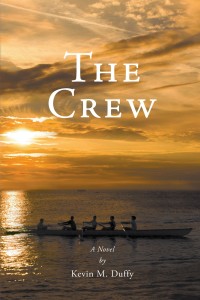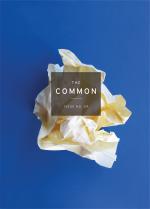Posted by Erin Duffy, Nonfiction Editor for Issue 4.1
I’ve wanted to go into publishing for years. I imagined myself in a bustling metropolitan setting, attending corporate meetings, with piles and piles of manuscripts as far as the eye can see. But if there’s anything I’ve learned in the last year or so, it’s that that image makes up only a small fraction of the publishing industry: however big and powerful the major publishing houses may be, there are just as many rewarding opportunities –for writers and aspiring editors alike—in smaller corners.
My first experience with small press was actually quite indirect. Last year, my father published a novel entitled The Crew. It was his first venture into the literary world in any capacity: my father is an engineer with a military background, but nonetheless, he spent the last ten years or so writing a novel about life in the US Merchant Marine Academy in his spare time. The finished product was a whopping seven hundred-page book with nowhere to go. So, after at least two rewrites (and plenty of pestering from me), he began to seriously look into getting it published.
quite indirect. Last year, my father published a novel entitled The Crew. It was his first venture into the literary world in any capacity: my father is an engineer with a military background, but nonetheless, he spent the last ten years or so writing a novel about life in the US Merchant Marine Academy in his spare time. The finished product was a whopping seven hundred-page book with nowhere to go. So, after at least two rewrites (and plenty of pestering from me), he began to seriously look into getting it published.
The first roadblock presented itself immediately. “Basically, I learned that if you wanted to go to a big publishing house, you had to have an agent,” my father told me recently. “And I wasn’t sure how to go about getting one. It’s almost like being an actor, where you need an agent to get auditions for you. But it’s still a matter of whether or not [the agent] would be willing to take you on as a client.”
My father’s analogy wasn’t too far off the mark. Many publishing houses don’t accept unsolicited manuscripts, and they almost always want to speak to a literary agent first rather than to the authors themselves, especially if the author is unpublished. Finding an agent was essentially an extra audition process that my dad didn’t want to bother with.
So instead, he turned to a little company by the name of Page Publishing. Continue reading

 When I’m at home, then in my bedroom, to be alone. I shut the door depending on if people are making noise. But having an open door is especially nice if you’re home alone—then you have a connection to the rest of the house. But I mean, if I remembered to shut the door, I would.”
When I’m at home, then in my bedroom, to be alone. I shut the door depending on if people are making noise. But having an open door is especially nice if you’re home alone—then you have a connection to the rest of the house. But I mean, if I remembered to shut the door, I would.”


